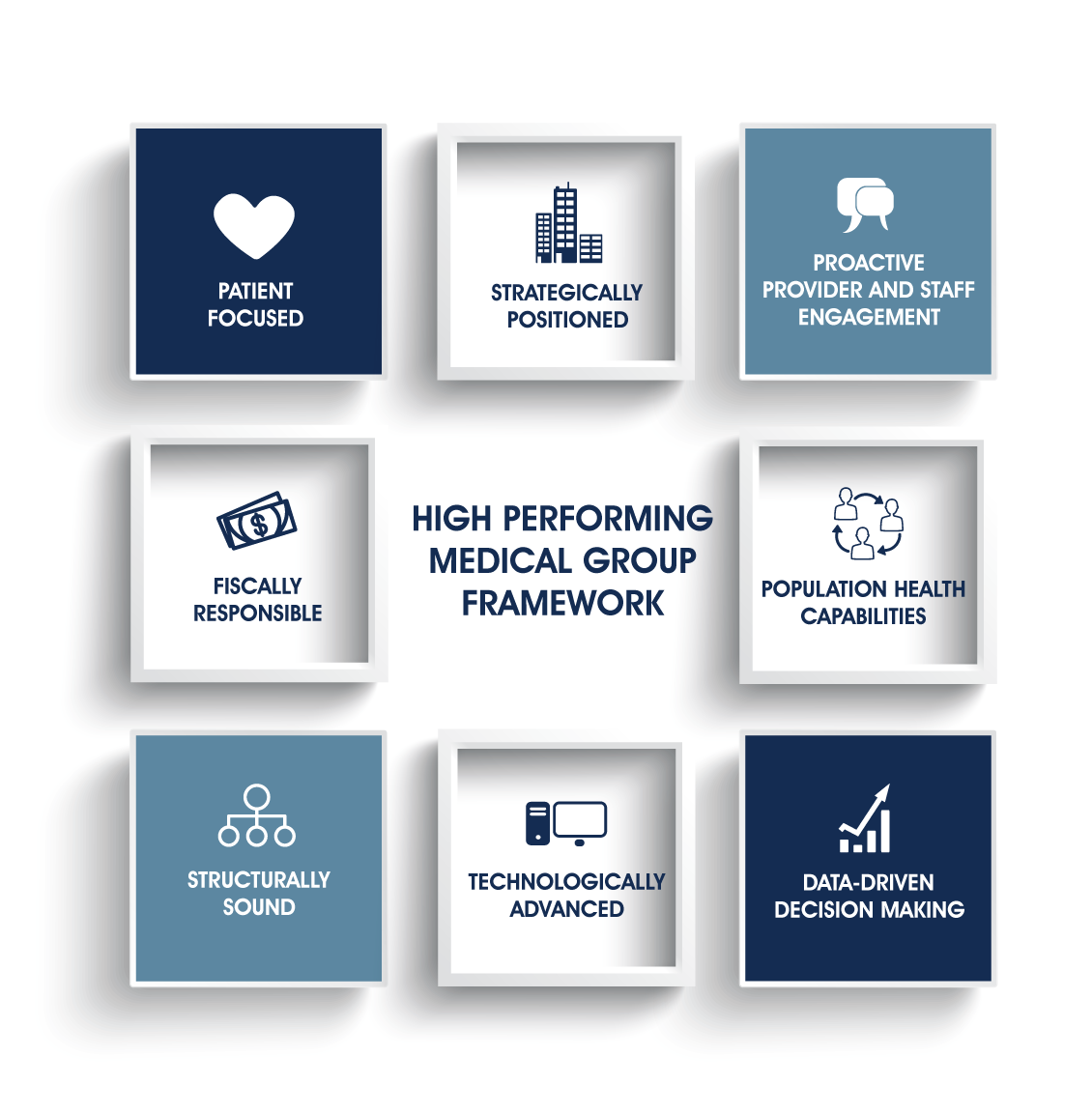Turn Your Organization Into a HPMG
As the healthcare industry continues to evolve, having a high performing medical group is essential for success. A HPMG helps health care systems achieve value-based revenue models and has eight key characteristics that it needs to possess.
What is a High Performing Medical Group?
A high performing medical group is a group of medical professionals (either employed, networked or just on the medical staff) that are well-managed and committed to providing the highest quality care to their patients. An HPMG is focused on creating a culture of excellence and innovation and is committed to improving patient care and outcomes. These medical groups are strategically positioned to be able to provide value-based revenue models.
Why is a High Performing Medical Group Important?
“A HPMG is essential for health care systems to achieve success as the industry evolves, said Hank Duffy, CEO of JHD Healthcare Partners, a management consulting firm that works with hospital-owned, PE-backed, and independent physician groups.
These medical groups provide a critical mass of physician groups that are necessary for value-based revenue models. An HPMG is also the cornerstone of patient-focused care and population health capabilities.
What are the Characteristics of a High Performing Medical Group?
There are eight key characteristics that an HPMG should possess. These include:
Patient Focused: An HPMG is committed to providing the highest quality of care. This includes utilizing evidence-based practices and delivering an excellent patient experience. From the moment a patient schedules the appointment to the moment they exit, an HPMG works to ensure that the patient’s experience is positive and that their needs are met.
Strategically Positioned: An HPMG must be able to align with the organization’s strategic goals and objectives, as well as understand the changing needs of the community and how to best meet them. This means it is well-positioned in terms of location, services, and partnerships.
Fiscally Responsible: An HPMG should be able to manage and sustain a financially sound organization. This means that the medical group must understand the financial impact of decisions and strive to maximize efficiency and cost savings as well as have a well-oiled revenue cycle.
Proactive Provider and Staff Engagement: An HPMG works to ensure that its providers and staff are engaged in the decision-making process and feel empowered to make the best decisions for the organization.
Population Health Capabilities: An HPMG is focused on providing comprehensive care to a population of patients. This means that it is able to provide preventive care and other value-based services to ensure the overall health of its population.
Structurally Sound: An HPMG should have a strong organizational structure and governance model, and processes in place. This ensure effective operations and delivery of quality care.
Technologically Advanced: An HPMG utilizes the latest technology to ensure that its patients are receiving the highest quality of care. This includes the use of Electronic Health Records (EHRs) and other technology solutions to enable automation and efficiency.
Data-Driven Decision Making: An HPMG is data-driven in its decision-making process. This means that it utilizes data to inform its decisions and works to ensure that it is making the best decisions for its patients and its organization based on data.
By having a high performing medical group, healthcare systems can achieve success as the industry evolves. In addition, they are essential for value-based revenue models, patient satisfaction and physician workload reduction.
Want to evaluate your practice against the HPMG criteria? JHD Healthcare Partners’ Blitz solution is a great start. Click here to see a sample of what you’d receive from this 1-3 week assessment.

